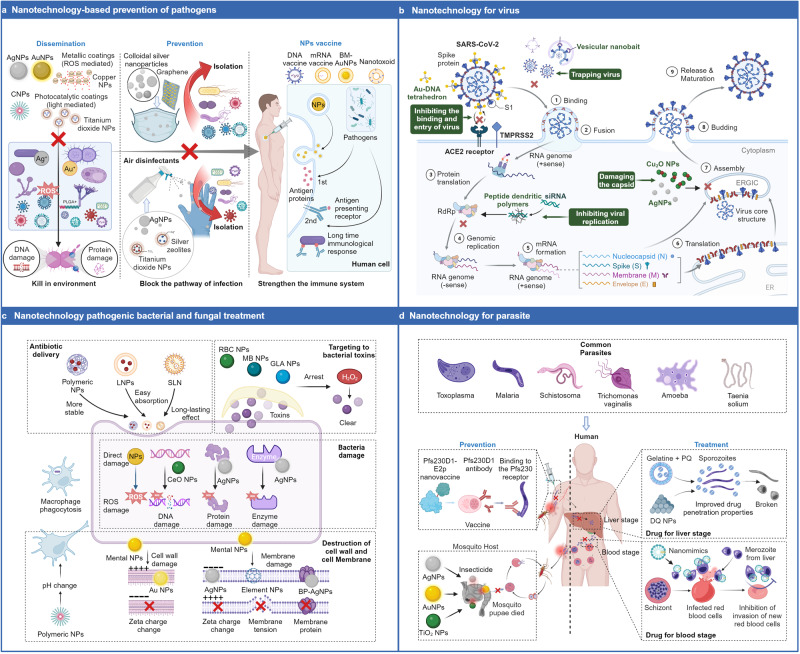Fig. 3.
Applications of nanotechnology in the treatment of bacteria, fungal, viruses, and parasites. a Nanotechnology in the prevention of pathogenic bacterial infections, which include killing bacteria in the environment, blocking transmission routes and vaccination: AgNPs can release silver ions in the environment, generating ROS that damage the DNA and proteins of bacteria;358 AgNPs can also be applied to masks and disinfectants to prevent the invasion of pathogens and block infection pathways;799 Nanovaccines can enhance human immunity to improve resistance to infection. b Nanotechnology strategies against viruses. Taking the example of the coronavirus, nanotechnology can intervene in various processes of virus proliferation, such as capturing viruses outside nanocages, binding to spike proteins with nanocomplexes, inhibiting the binding and entry of SARS-CoV-2 into host cells. Similarly, targeting the RdRp complex can silence SARS-CoV-2 and inhibit its genome replication. AgNPs and other nanomaterials can also damage the viral envelope and disrupt the viral capsid. c Nanotechnology in antibacterial therapy. The antibacterial mechanism includes four aspects: the delivery of antibiotics,390 targeting bacterial toxins, damaging bacterial cell walls and membranes,402 and destroying bacterial DNA, proteins, and enzymes.417 d Nanotechnology applications against parasites. A variety of NPs targeting the parasite’s growth cycle have been used in the prevention and treatment of malaria: killing Plasmodium larvae in the environment and blocking the transmission pathway; generating antibodies to Plasmodium by nano-vaccination;438 and destroying Plasmodium in the liver and blood stages.437 RdRp: RNA-dependent RNA polymerase

